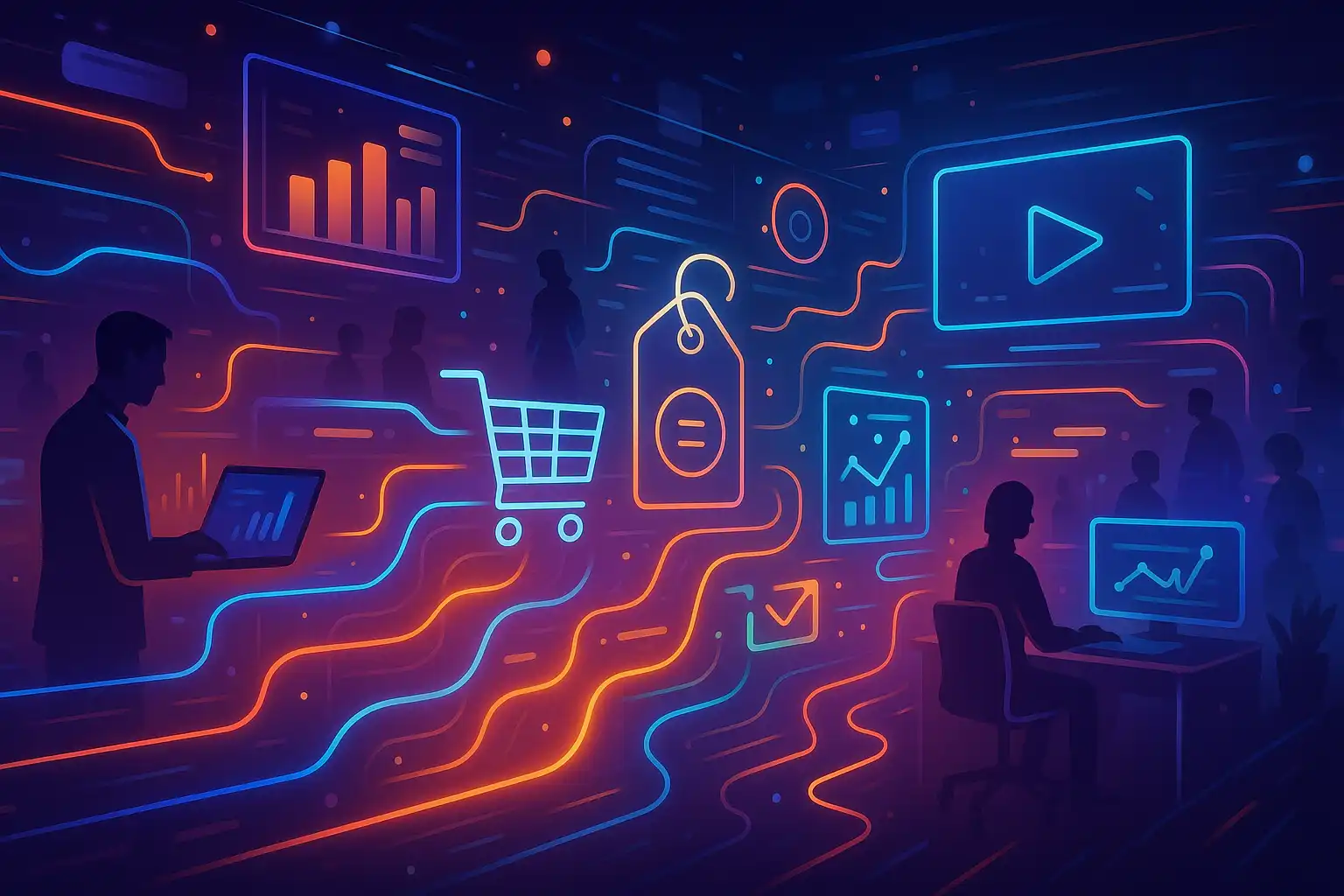
If you are searching for a practical data processing services example to model your workflow, you are in the right place. Data processing services are not just for tech giants—they help organizations of any size turn raw information into valuable insights, automate repetitive tasks, and make smarter business decisions. This guide introduces real-world examples, shows you how companies use these services, and highlights what to look for when modeling your own data-driven workflow.
What is a Data Processing Services Example?
A data processing services example describes how real businesses collect, organize, and analyze data to support their everyday operations. These examples show how companies use specialized software or cloud-based tools to:
- Collect and clean large amounts of information
- Transform data into usable formats
- Analyze or visualize trends and patterns
- Automate decision-making and reporting
For instance, Amazon’s dynamic pricing system collects millions of data points about shopping behaviors every day, then adjusts prices in real time to stay competitive and maximize revenue. In another case, Netflix uses data processing services to track what each member watches and recommends shows or movies tailored to their preferences, making the user experience more personalized.

How Do Businesses Use Data Processing Services in the Real World?
Many well-known brands use data processing services to solve business challenges, improve efficiency, and enhance customer satisfaction. Let’s look at several real-world big data analytics examples and how they shape industry workflows:
- Amazon: Known for its advanced analytics, Amazon changes product prices up to 2.5 million times per day. This dynamic pricing is powered by automated data processing, which considers shopping trends, inventory, competitor prices, and buying histories.
- Netflix: The platform tracks how, when, and what users watch. By analyzing these patterns with data processing tools, Netflix recommends content, designs custom trailers, and even decides which new shows to produce.
- Uber Eats: To optimize food delivery, Uber Eats uses real-time weather data, restaurant preparation times, and driver locations. Their system predicts delays, groups orders efficiently, and notifies both restaurants and customers automatically.
- McDonald’s: Their drive-thru menus use instant data—like the current weather, time of day, and sales—to show offers that increase the chance of upselling and provide a more relevant customer experience.
- Starbucks: By analyzing data from loyalty apps, Starbucks recommends drinks, adjusts marketing, and decides where to open new stores, aligning offers with local trends, seasons, and even weather patterns.
- Accuweather: This weather service processes vast amounts of meteorological data. It then sells API access to other businesses, allowing them to use precise forecasts in their apps, travel planning, or supply chain management tools.
Each example highlights the benefits of data-driven workflow optimization, as companies automate formerly manual tasks and respond faster to market changes.
Which Data Processing Steps Should You Model in Your Workflow?
If you want to build or improve your own workflow, following a proven data processing services example can save time and boost results. Here is a typical process you might model:
- Data Collection: Gather data from various sources—sales, customer interactions, sensors, web analytics, or external platforms.
- Data Cleaning: Remove errors, duplicates, and inconsistencies to improve quality and accuracy.
- Data Transformation: Convert data into standard formats or structures to make it suitable for analysis. This step may include normalizing text, categorizing items, or creating calculated fields.
- Data Storage: Securely save data in databases, data lakes, or cloud platforms where it can be easily accessed.
- Data Analysis: Use software tools to find patterns, trends, or insights that answer business questions, predict future trends, or drive automation.
- Data Reporting & Visualization: Present findings with clear dashboards or automated reports, so decision-makers can act quickly.
In practice, these steps often overlap and repeat as data is updated or new insights are needed. By leveraging cloud-based data science services, even smaller teams can access powerful analytics and automate complex processing pipelines.
What Key Features Should You Look For in Data Processing Services?
Choosing the right service is essential for a smooth, effective workflow. Here are the main features to consider as you explore different solutions:
- Scalability: Can the service handle growing volumes of data as your business expands? This is crucial for companies like Amazon and Netflix, who work with massive datasets.
- Real-Time Processing: Can the platform process data as soon as it arrives? Real-time features support dynamic pricing, instant notifications, and adaptive user experiences.
- Support for Diverse Data Types: Look for systems that can process structured (like sales numbers), unstructured (such as videos or social posts), and semi-structured data (like emails).
- Data Quality Assurance: The service should include tools to check, validate, and correct inaccurate or missing data before analysis.
- Actionable Insights: Beyond just storage, the platform should deliver clear visualizations and recommendations to guide your next steps.
- Integration: Easy connection with your current software or APIs makes implementation faster, as shown by brands using Accuweather’s developer services or Starbucks’ app integrations.
To see how a complete data-driven workflow is structured, you may want to refer to resources like a full data science workflow guide that explains every step from planning to deployment.
How Do Data Processing Services Improve Efficiency?
Data processing services streamline workflow in several ways. First, they automate repetitive or time-consuming tasks like data entry, validation, and reporting. This gives your team more time to focus on high-value work and innovation. For example, Marriott Hotels use facial recognition for check-ins, reducing manual paperwork and speeding up guest service.
Second, these services improve accuracy by minimizing human error. Well-designed systems clean and standardize data before analysis, which leads to more reliable insights and better decisions. Third, they enable quick reactions to changing trends. Real-time dashboards or alerts help companies respond instantly, from retailers adjusting inventory to delivery apps rerouting drivers during storms.
Finally, data processing services allow businesses to find new opportunities. By centralizing and integrating information from multiple sources, companies can identify customer preferences, predict market shifts, or create targeted marketing campaigns. For ongoing improvements, implementing automated reporting for accurate and timely insights ensures decision-makers are always up-to-date.
Popular Tools and Platforms
There are many data processing tools available today, ranging from cloud-based solutions to open-source platforms. Popular options include:
- Apache Spark, Hadoop: Widely used for big data processing and analysis in enterprise environments.
- Google BigQuery: A cloud-based warehouse for fast, SQL-based analysis.
- Microsoft Azure Data Factory: For integrating, transforming, and managing data pipelines with cloud scalability.
- Tableau, Power BI: For data visualization and interactive reporting across teams and departments.
- Custom APIs: For integrating external data, such as weather (Accuweather), payments, or logistics.

FAQ
What are some common challenges with data processing services?
Many organizations struggle with collecting data from multiple formats, ensuring data quality, and keeping systems running smoothly as they scale. Security and privacy are also major concerns, especially with sensitive or personal data.
How can small businesses benefit from data processing services examples?
Small businesses can automate routine tasks, reduce errors, and gain fresh insights without hiring large analytics teams. Cloud services and pre-built dashboards make advanced analysis accessible and affordable.
Do I need technical expertise to use data processing services?
Many platforms offer user-friendly interfaces and templates for common workflows. Some knowledge of your data and business goals is helpful, but you don’t need to be a programmer to get started with most services.
Can data processing services help with regulatory compliance?
Yes, many services include features for data governance, audit trails, and secure storage, which help meet industry regulations and protect customer information.
